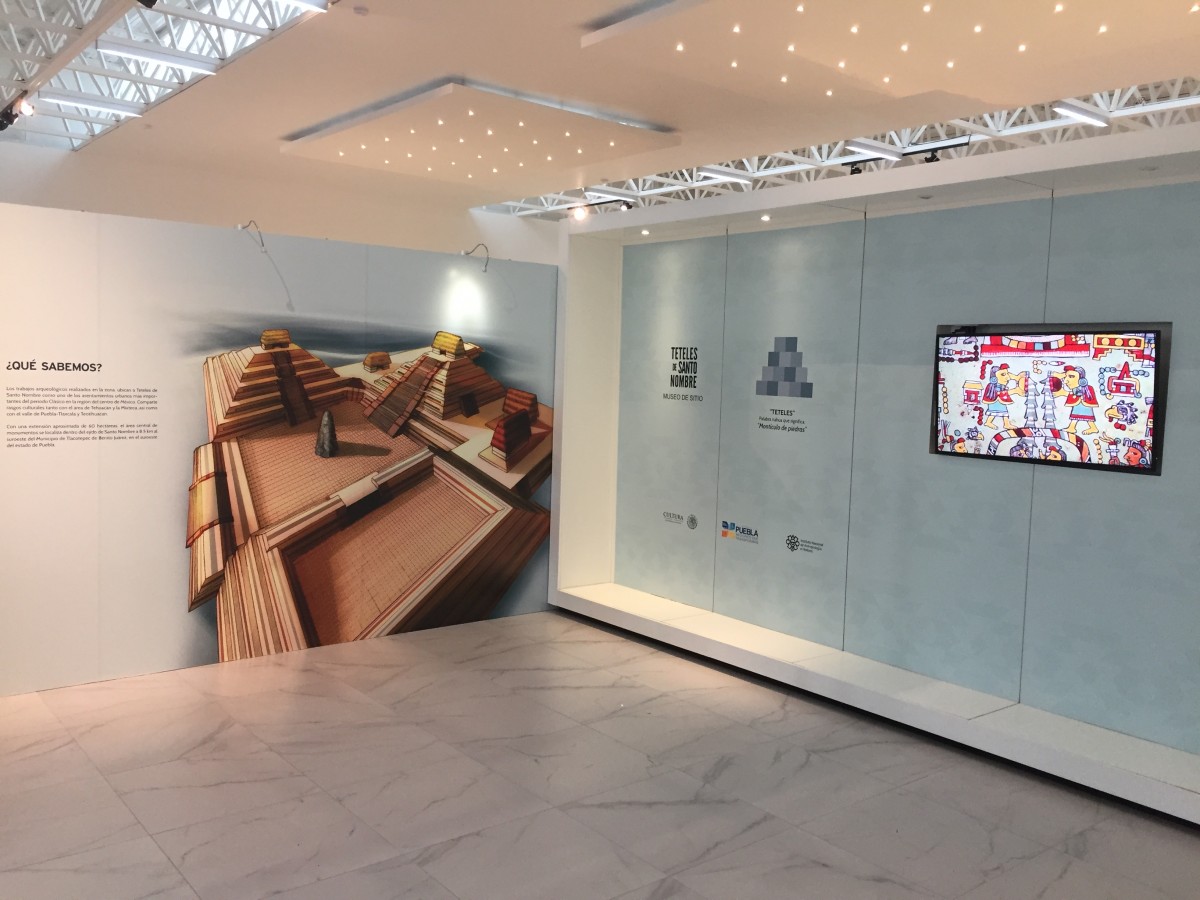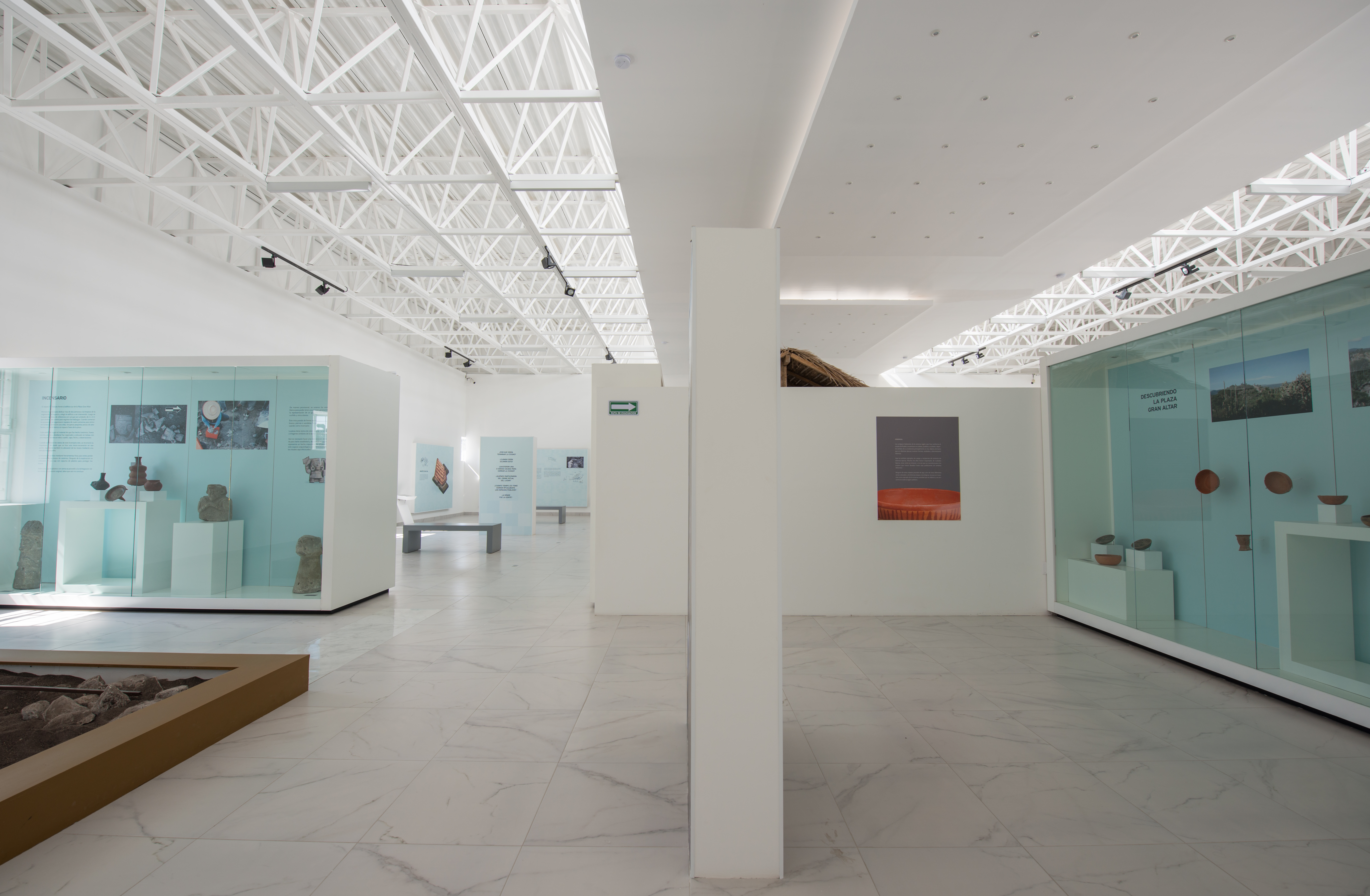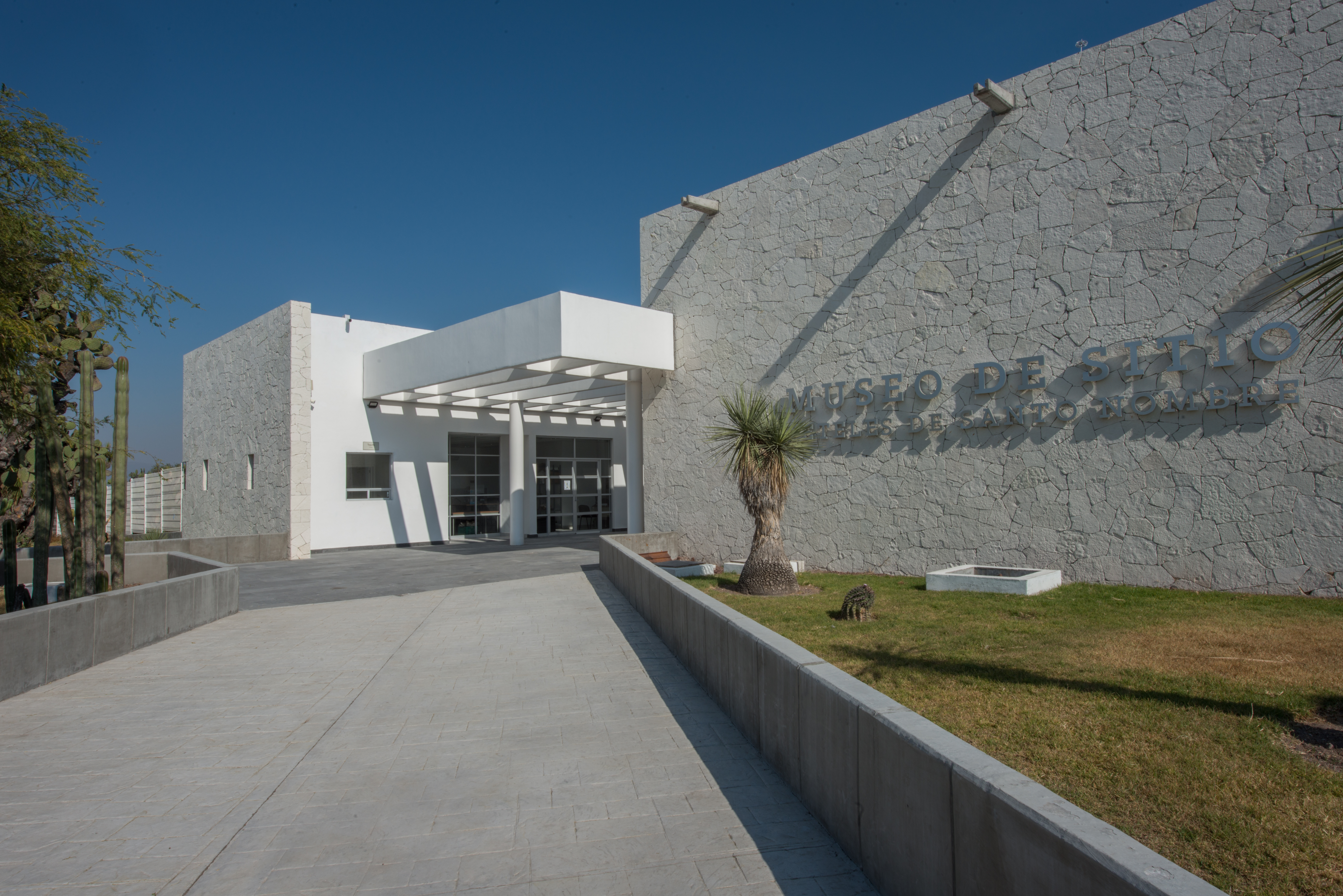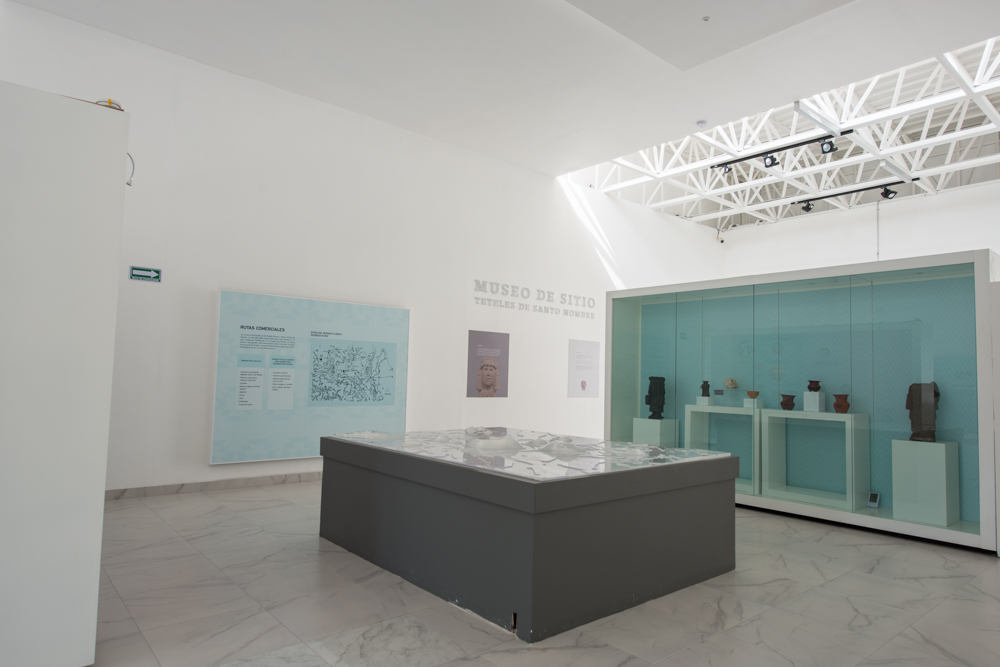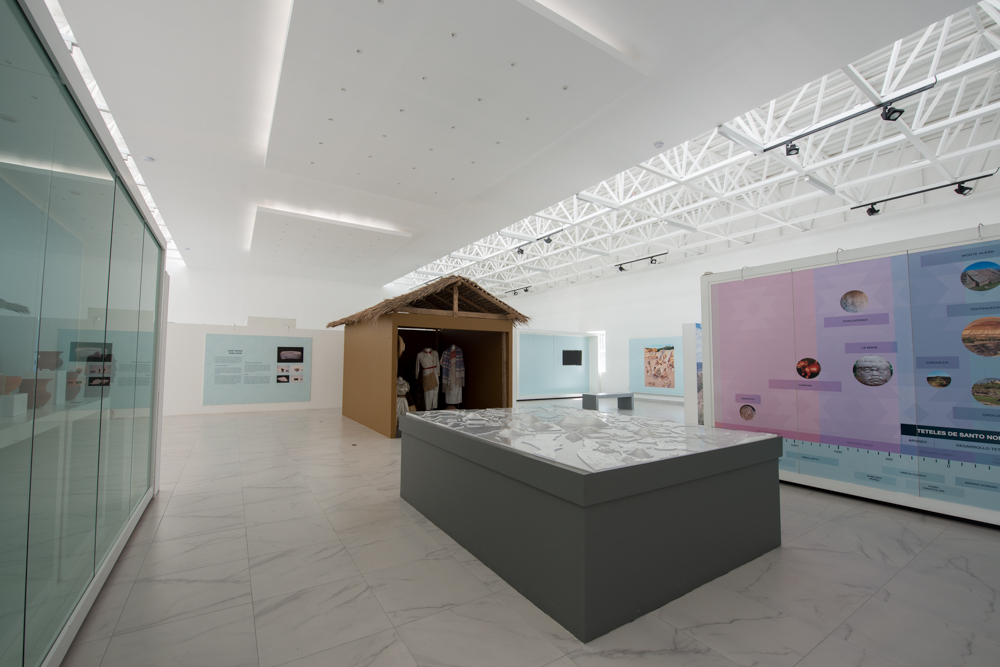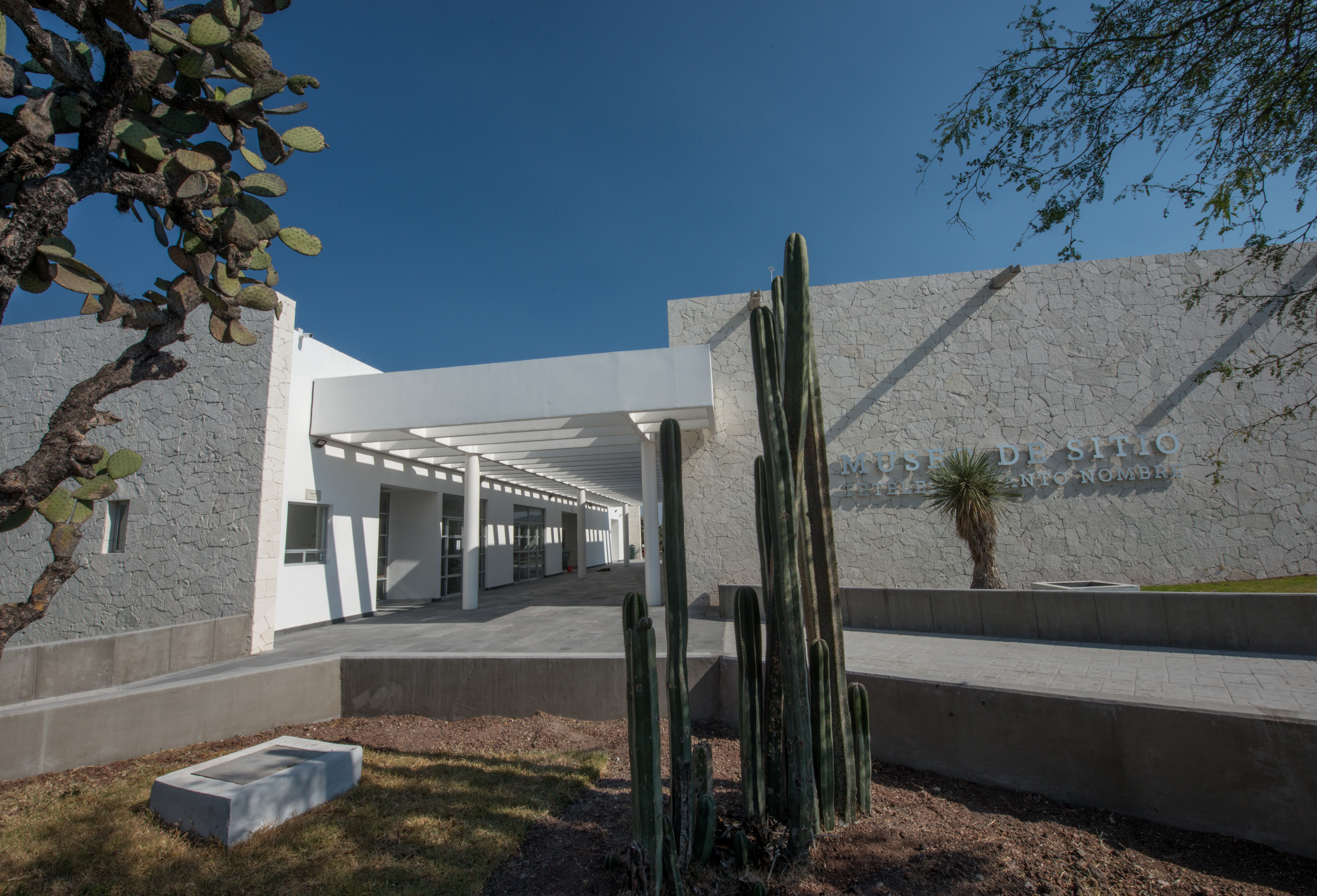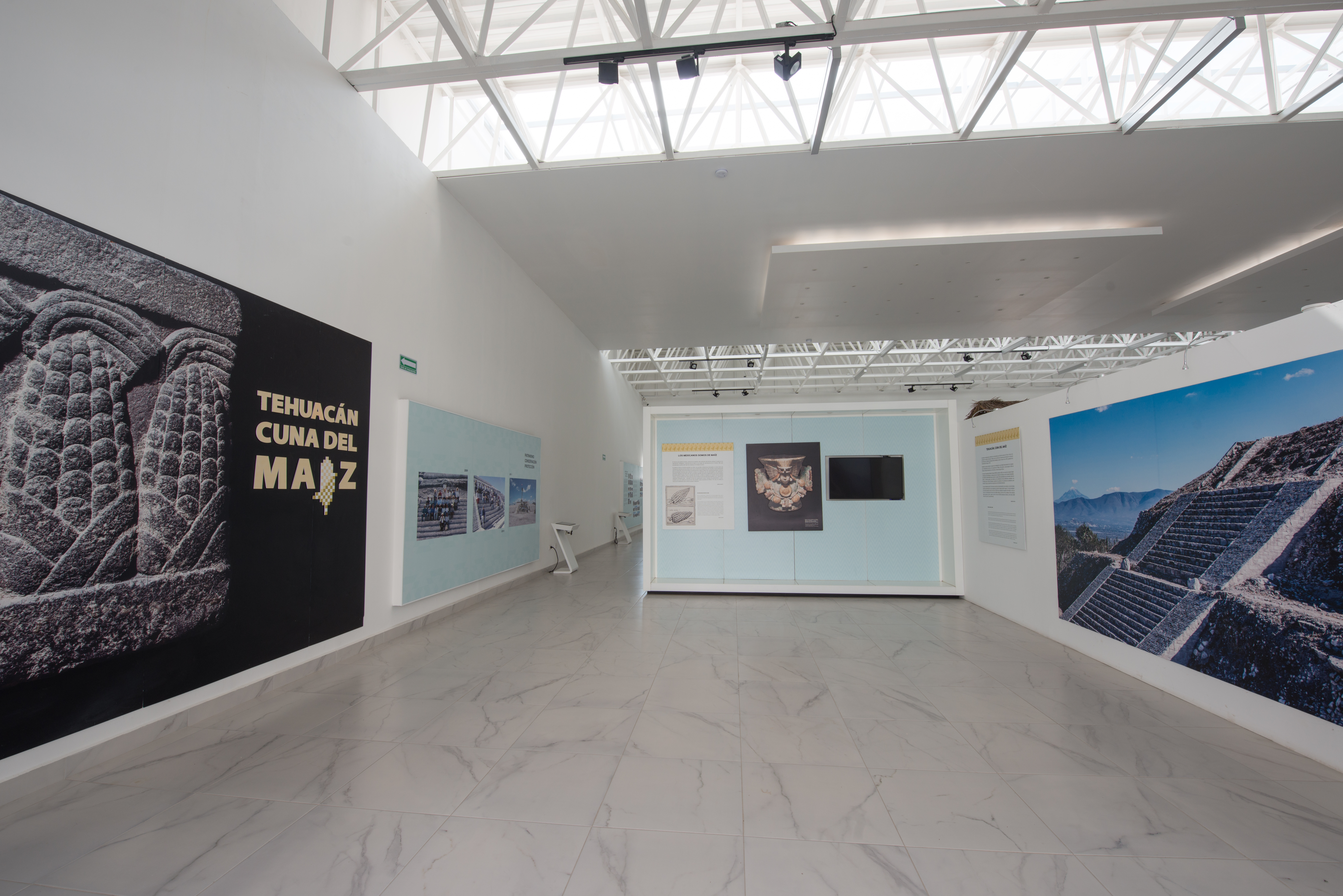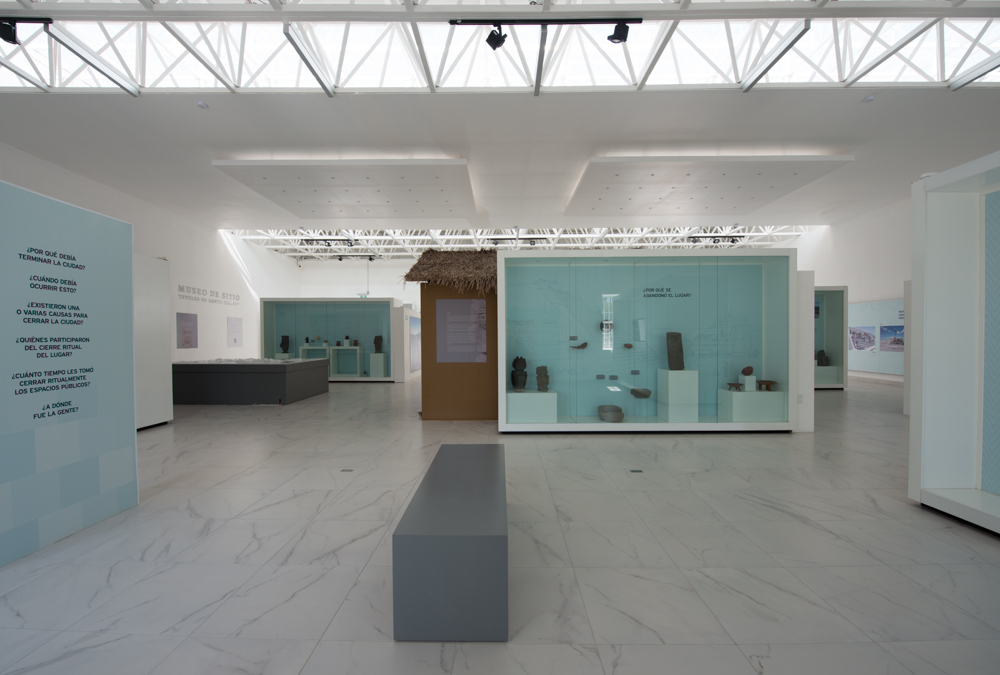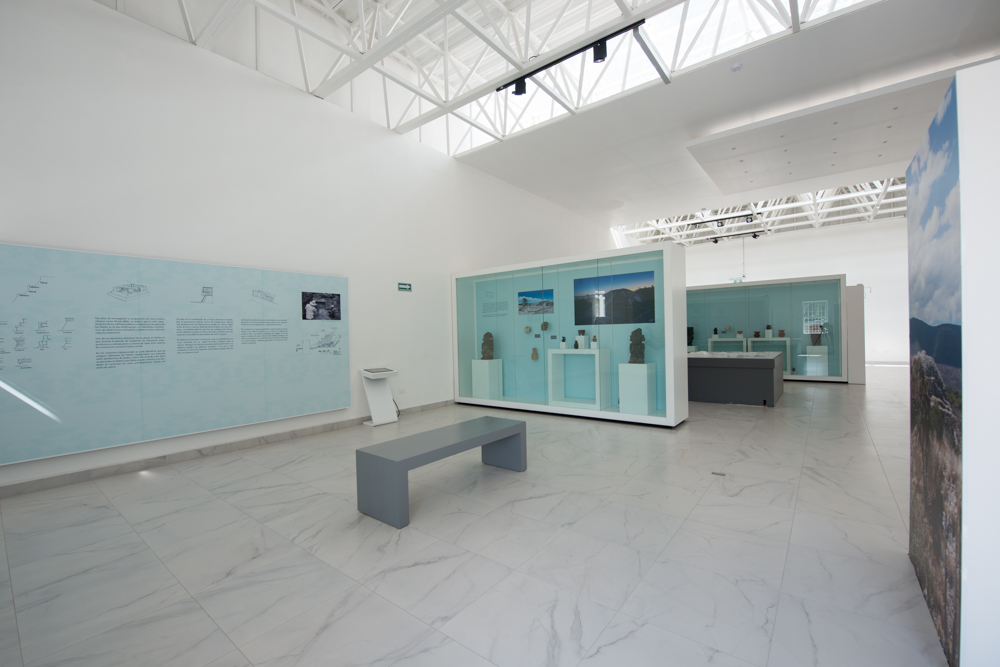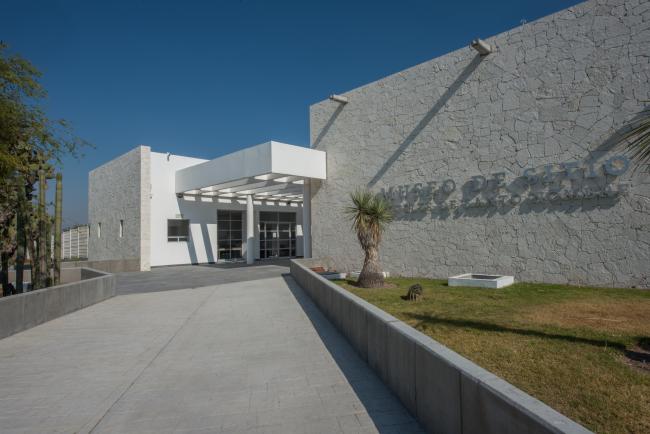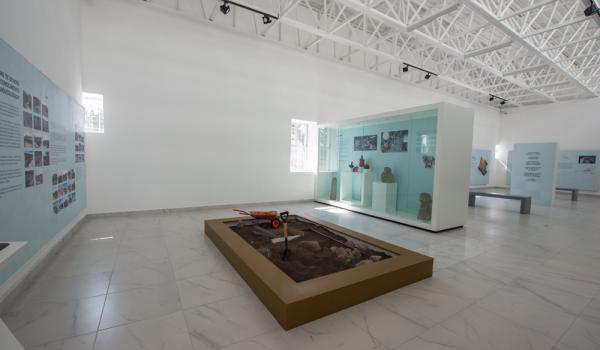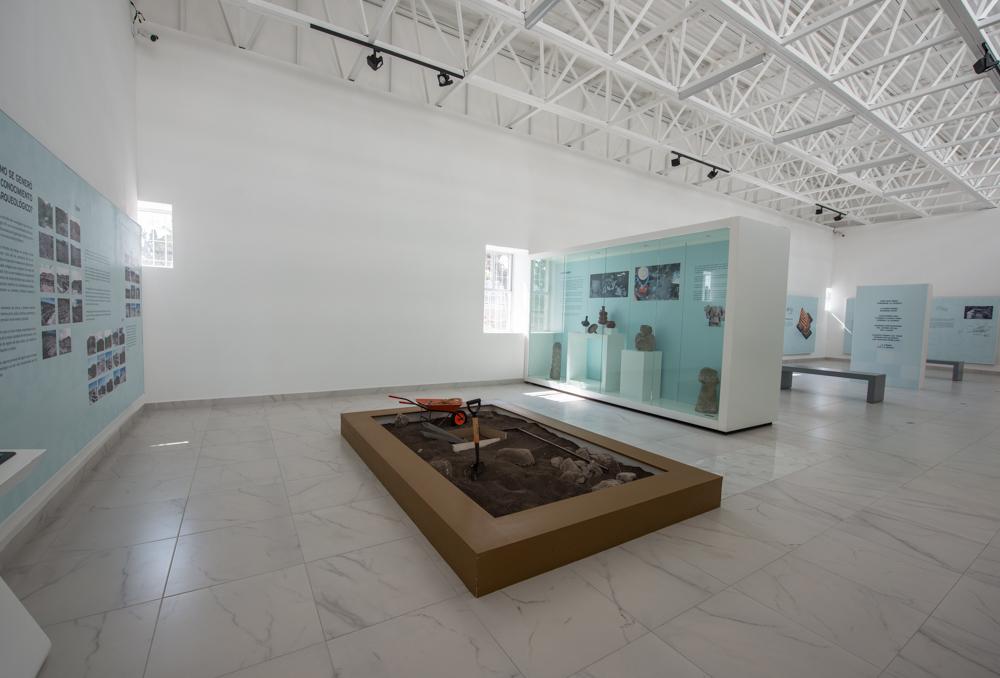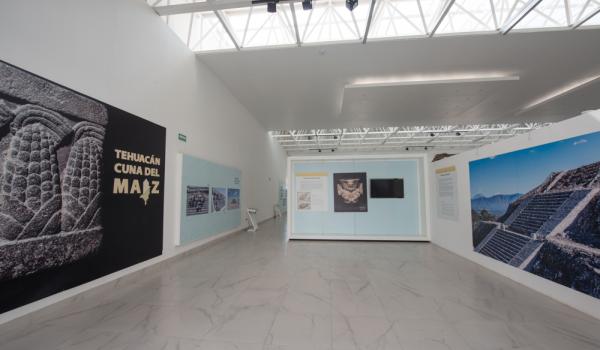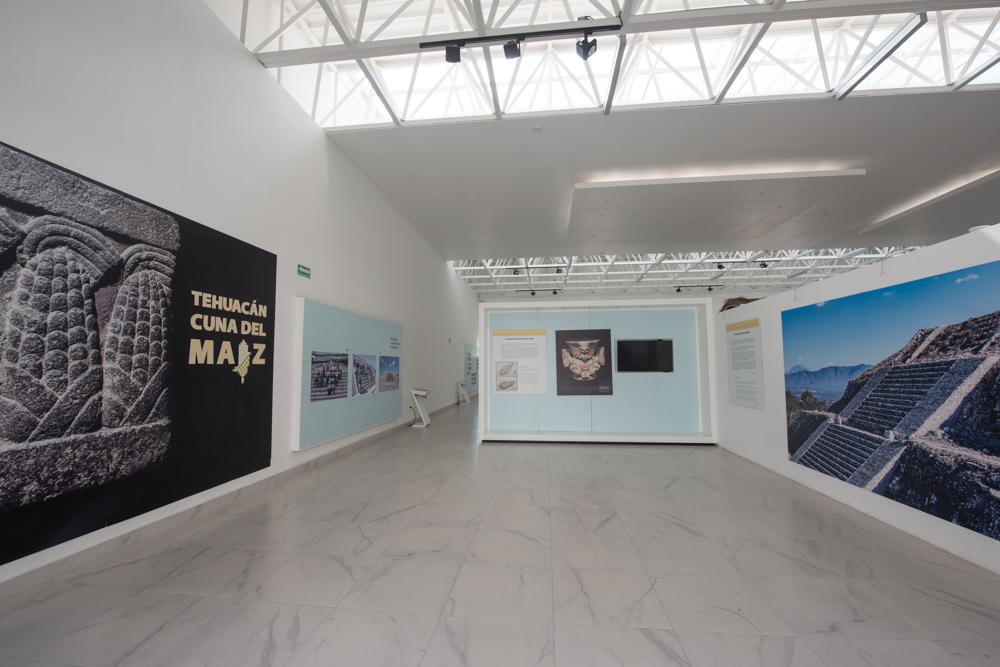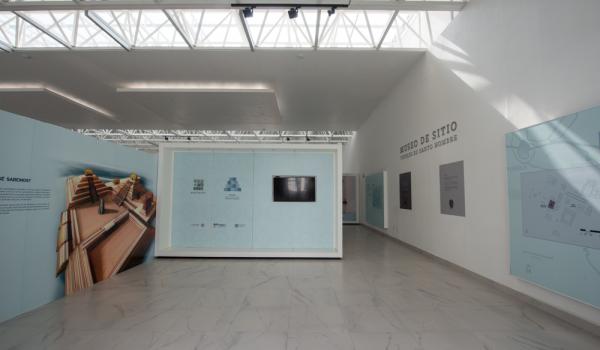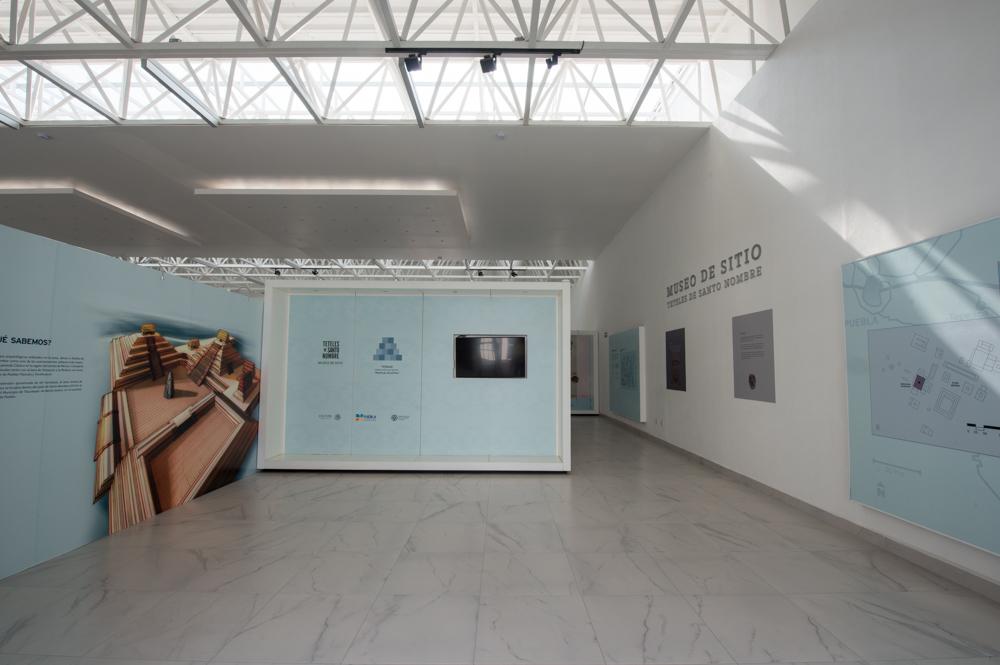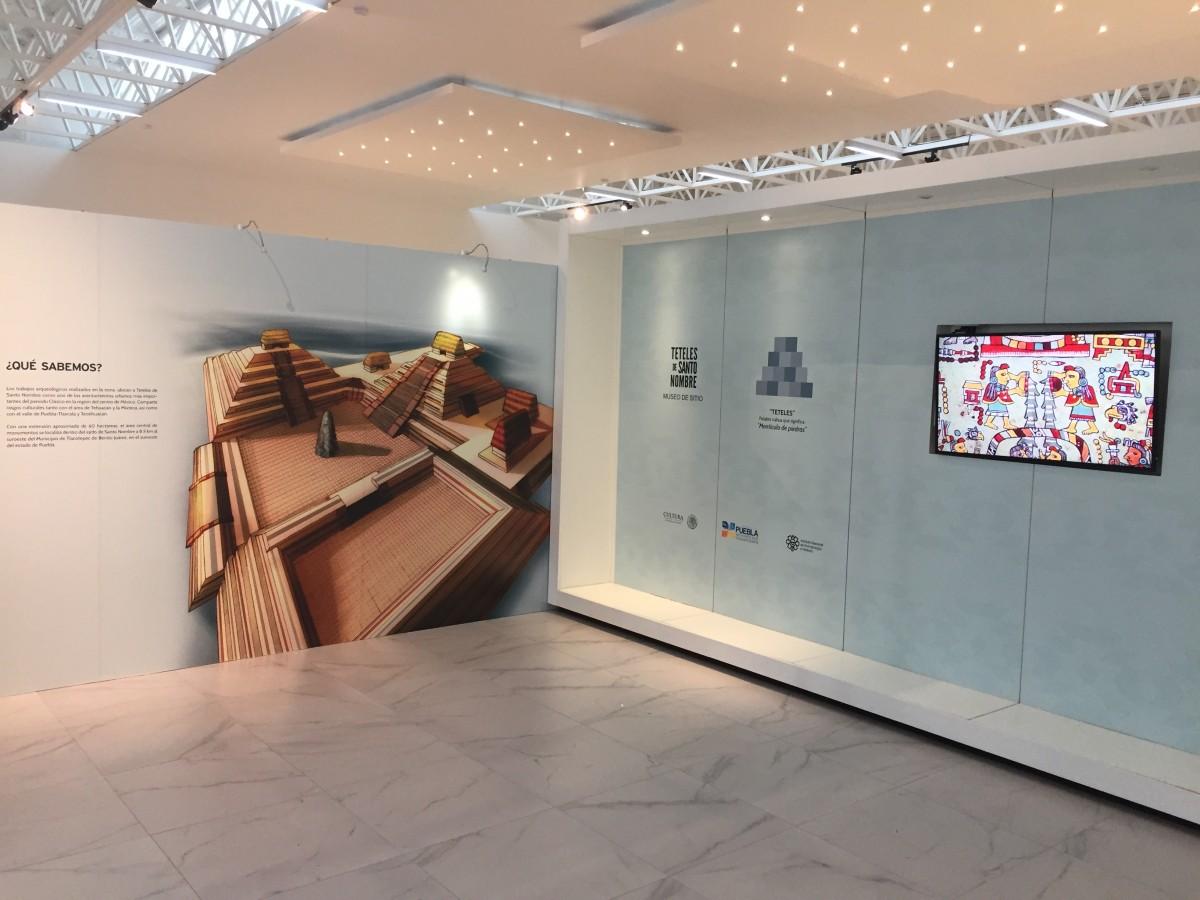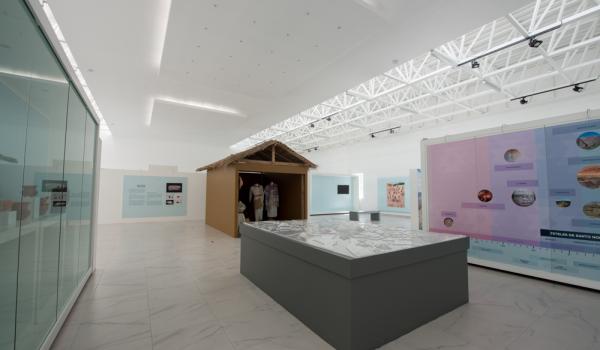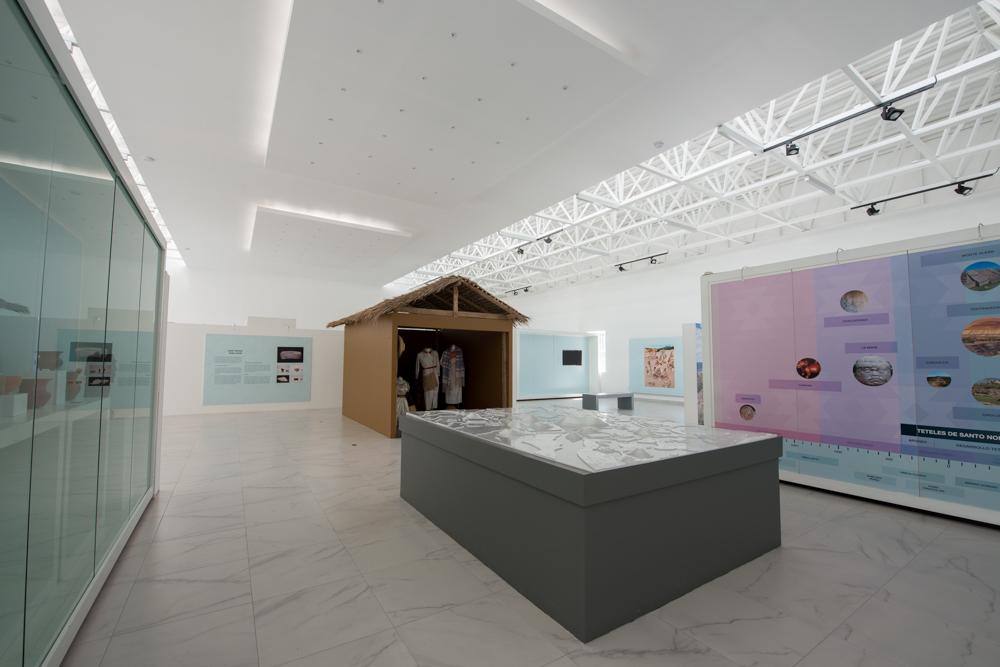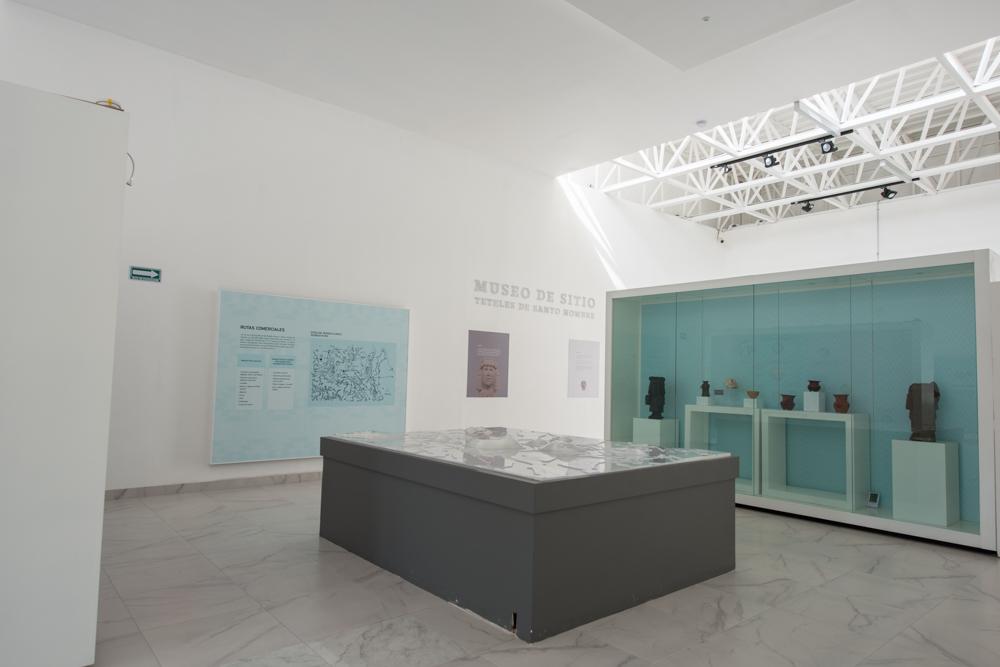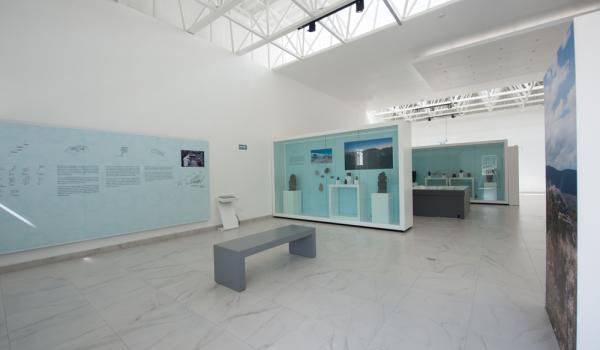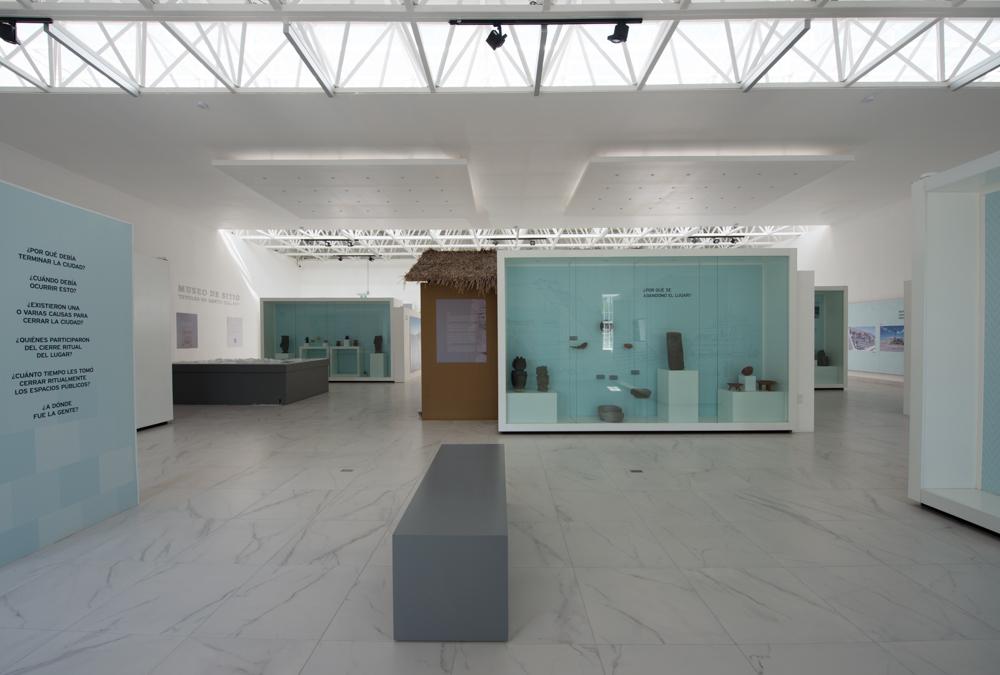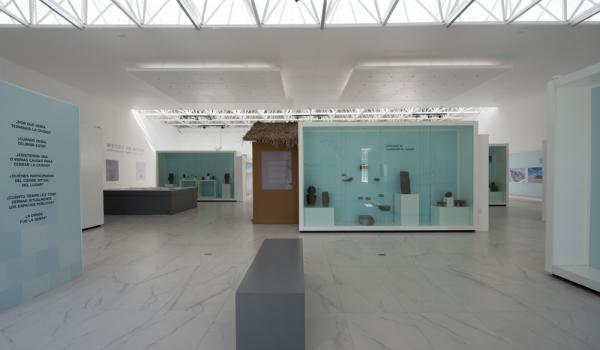The museum gives a general overview of the development of the ancient towns in the Tehuacan-Zucatlan region. Although the city was occupied for 1,000 years, the exhibition space includes eight galleries emphasizing the period in which it flourished, from 400 to 650 AD.
The first gallery provides an introduction. The second looks at the trading routes and the relationships between Teteles and other regions. The third looks at architecture, focusing primarily on the large monuments. The fourth is on everyday life, with an interesting hypothetical reconstruction of a house made from bahareque (sticks with a mud covering). The gallery connects with and incorporates an outdoor space where three dwelling areas were found during recent excavations.
The fifth gallery has an audiovisual on the history and features of the pre-Hispanic site. The sixth covers religion, highlighting the process of closing down the city. The archeologist Blas Castellón explains that before abandoning Teteles, the inhabitants carried out a closure ritual. They destroyed the objects and buildings, and then they buried everything with sand and earth. There are still doubts about why they did this, although it is thought that there was a natural cause or a connection to the productivity cycle. The seventh gallery describes the work of the archeologists on the site. The eighth looks at culture and identity, with a presentation on regional history, the historical background of Teteles with a thoughtful conclusion about caring for the cultural heritage of the pre-Hispanic peoples.




